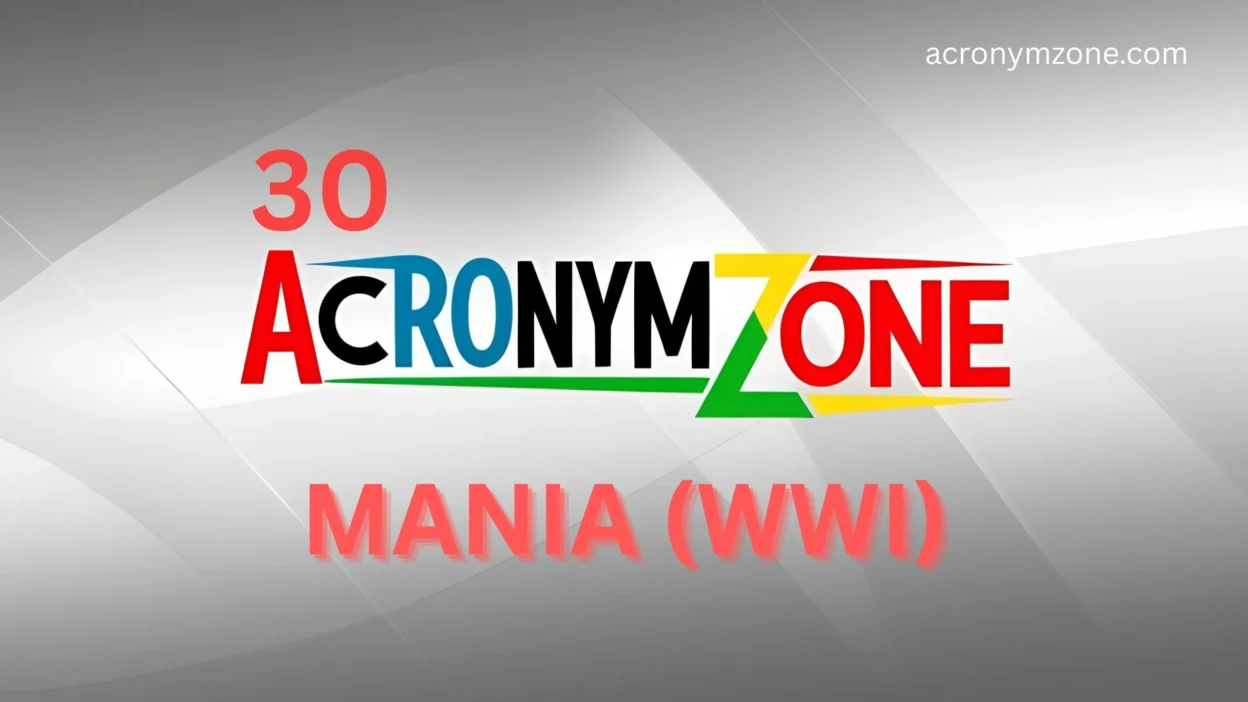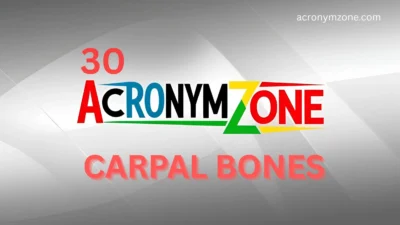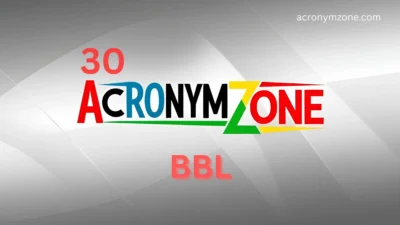If you’ve studied World War I in school, you’ve likely come across the acronym MANIA—a handy way to remember the long-term causes of the Great War.
But what if we took a creative twist on it, much like we did with “MIST,” and explored alternative acronyms that help deepen or reframe our understanding of the forces that led to one of the deadliest conflicts in history?
In this post, we’ll explain the original meaning of MANIA in the context of WWI, break down its core concepts, and then introduce 30 powerful, alternative acronyms—each with a unique angle or emphasis.
You’ll also learn when to use each term, whether you’re writing an essay, giving a presentation, or just trying to remember historical themes more vividly.
🌍 What Does MANIA Stand For?
In the historical context of World War I, MANIA stands for:
- Militarism – The belief in building up a strong military force and being prepared to use it aggressively.
- Alliances – Agreements between nations to aid and protect one another.
- Nationalism – Intense pride in one’s nation, often leading to competition and conflict.
- Imperialism – The desire to expand territory and influence through colonization or conquest.
- Assassination – Specifically, the murder of Archduke Franz Ferdinand of Austria in 1914, which triggered the war.
Together, these forces created a powder keg in Europe. But there are many lenses through which we can explore and remember these ideas—especially if you want to add depth to your understanding or creative variety to your expression.
🧠 30 MANIA Acronym Alternatives + When to Use Them
Below, you’ll find 30 creative acronyms inspired by MANIA. Each includes a breakdown of the terms, a brief explanation, and a sample sentence to show how it might be used.
1. CRASH – Competition, Rivalries, Alliances, Sabotage, Hegemony
- Use when: Emphasizing how unchecked competition led to collapse.
- Example: “WWI was less of a battle cry and more of a slow-motion crash.”
2. BLAST – Borders, Loyalty, Arms race, Sabers, Treaties
- Use when: Highlighting the explosive nature of pre-war politics.
- Example: “The continent was ready to blast apart under the weight of militarism and alliances.”
3. STORM – Strategy, Territory, Orders, Rivalry, Militarism
- Use when: Focusing on the aggressive posture of European powers.
- Example: “The storm had been brewing long before the first shot was fired.”
4. GRIND – Greed, Rivalry, Imperialism, Nationalism, Deployment
- Use when: Emphasizing the slow, inevitable drag toward war.
- Example: “Europe entered a political grind that ground peace into dust.”
5. CHAIN – Colonies, Hegemony, Alliances, Insecurity, Nationalism
- Use when: Describing how nations were locked together.
- Example: “The alliance system created a chain reaction no one could stop.”
6. FLARE – Fear, Loyalty, Arms buildup, Revenge, Expansion
- Use when: Talking about tension flaring up into conflict.
- Example: “National rivalries and military fear caused the flare that lit WWI.”
7. FAULT – Factions, Arms, Ultimatums, Land grabs, Tension
- Use when: Assigning collective blame across nations.
- Example: “Everyone shared in the fault line that cracked open in 1914.”
8. SPEAR – Statehood, Pride, Expansion, Arms race, Revenge
- Use when: Highlighting aggressive nationalism and expansion.
- Example: “Every nation held its spear high—ready for glory, primed for war.”
9. DREAD – Diplomacy failure, Rivalry, Empire, Alliances, Deployment
- Use when: Conveying anxiety and doom.
- Example: “Dreadnoughts weren’t the only thing building—so was a sense of dread.”
10. PRIME – Pride, Rivalries, Imperialism, Militarism, Entanglements
- Use when: Describing how Europe was primed for disaster.
- Example: “It was the prime setup for total war.”
11. TANGS – Treaties, Arms, Nationalism, Greed, Sabotage
- Use when: Showing how tangled politics led to chaos.
- Example: “Each tangle of treaties drew more nations into the fire.”
12. SCARF – States, Colonies, Armies, Revenge, Feuds
- Use when: Referring to emotional or political wounds.
- Example: “Europe wore a scarf of past feuds that no diplomacy could hide.”
13. CRATE – Colonialism, Rivalry, Alliances, Tension, Extremism
- Use when: Pointing to imperialism and extremist ideologies.
- Example: “The world war was stored in a crate of unresolved tension.”
14. GUILT – Greed, Ultimatums, Imperialism, Loyalty, Tensions
- Use when: Exploring moral ambiguity.
- Example: “Who carries the guilt for the Great War?”
15. FENCE – Fear, Empires, Nationalism, Colonies, Entanglements
- Use when: Showing nations protecting their own interests.
- Example: “Each country built its own fence—and no one watched the gate.”
16. SNARE – States, Nationalism, Arms, Revenge, Entanglement
- Use when: Showing how countries were trapped.
- Example: “The alliances were a snare no one could escape.”
17. TRAPS – Treaties, Rivalries, Arms, Pride, Sabotage
- Use when: Highlighting poor decisions and overconfidence.
- Example: “Each nation fell into traps of their own making.”
18. SPARK – States, Pride, Alliances, Rivalry, Killings
- Use when: Emphasizing the assassination as the trigger.
- Example: “The spark that lit the world war was tiny—but everything was dry.”
19. DUSKY – Diplomacy, Ultimatums, Sabers, Kings, Yields
- Use when: Adding a moody or poetic tone to historical retellings.
- Example: “In the dusky shadows of empire, war was born.”
20. GRASP – Greed, Rivalry, Alliances, Sabotage, Pride
- Use when: Showing the reach for power and territory.
- Example: “Each nation grasped for dominance, ignoring the cost.”
21. THORN – Treaties, Hostility, Orders, Rivalry, Nationalism
- Use when: Highlighting the pain of unresolved tensions.
- Example: “Nationalism became the thorn in Europe’s side.”
22. PLANS – Pride, Loyalty, Arms, Nationalism, Sabotage
- Use when: Showing how rigid military plans pushed war forward.
- Example: “Pre-made war plans made peace impossible.”
23. FIBER – Fear, Imperialism, Borders, Empires, Rivalries
- Use when: Highlighting deep structural tensions.
- Example: “The fiber of Europe was torn long before the first bullet.”
24. BOOM – Borders, Orders, Opportunism, Militarism
- Use when: Focused on the arms race and sudden escalation.
- Example: “One boom led to another, and then came the war.”
25. CROWN – Colonies, Rivalry, Orders, War plans, Nationalism
- Use when: Describing monarchies and their ambitions.
- Example: “The crown heads of Europe pulled the strings to disaster.”
26. FEVER – Fear, Empires, Vengeance, Entanglements, Rivalry
- Use when: Talking about the emotional fever pitch of the time.
- Example: “Europe was burning with a nationalist fever.”
27. STAND – States, Tensions, Arms, Nationalism, Diplomacy
- Use when: Emphasizing a refusal to back down.
- Example: “Each state made a stand instead of seeking peace.”
28. BLAZE – Borders, Loyalty, Arms, Zeal, Entanglements
- Use when: Highlighting ideological fervor and momentum.
- Example: “The world caught a blaze no one could put out.”
29. CRISP – Colonies, Rivalries, Injustice, Sabers, Pride
- Use when: Showing how colonial resentment played a role.
- Example: “Crisp alliances cracked under global pressure.”
30. SINKS – Sabers, Imperialism, Nationalism, Kings, Sabotage
- Use when: For describing the sinking inevitability of war.
- Example: “The continent sank into a conflict that would redefine history.”
🎯 Choosing the Right Acronym
Want to better remember or teach WWI’s causes? Choose based on your purpose and audience:
| Goal | Suggested Acronyms | Why? |
| Teaching students | SPARK, BLAST, CRASH | Memorable and visual |
| Writing a dramatic essay | DREAD, STORM, GRIND | Emphasizes tone |
| Analyzing alliances | SNARE, TANGS, CHAIN | Focus on entanglements |
| Highlighting nationalism | THORN, SPEAR, STAND | Brings out pride/conflict |
| Poetic or creative writing | DUSKY, FENCE, GUILT | Emotional nuance |
📘 Final Thoughts
The original MANIA is a solid foundation for understanding WWI’s complexity, but alternative acronyms give you flexibility to express different angles—political, emotional, even poetic. Whether you’re a student, writer, or history enthusiast, using the right acronym can bring clarity and richness to your narrative.
Choose wisely, connect deeply, and let your historical storytelling shine.




